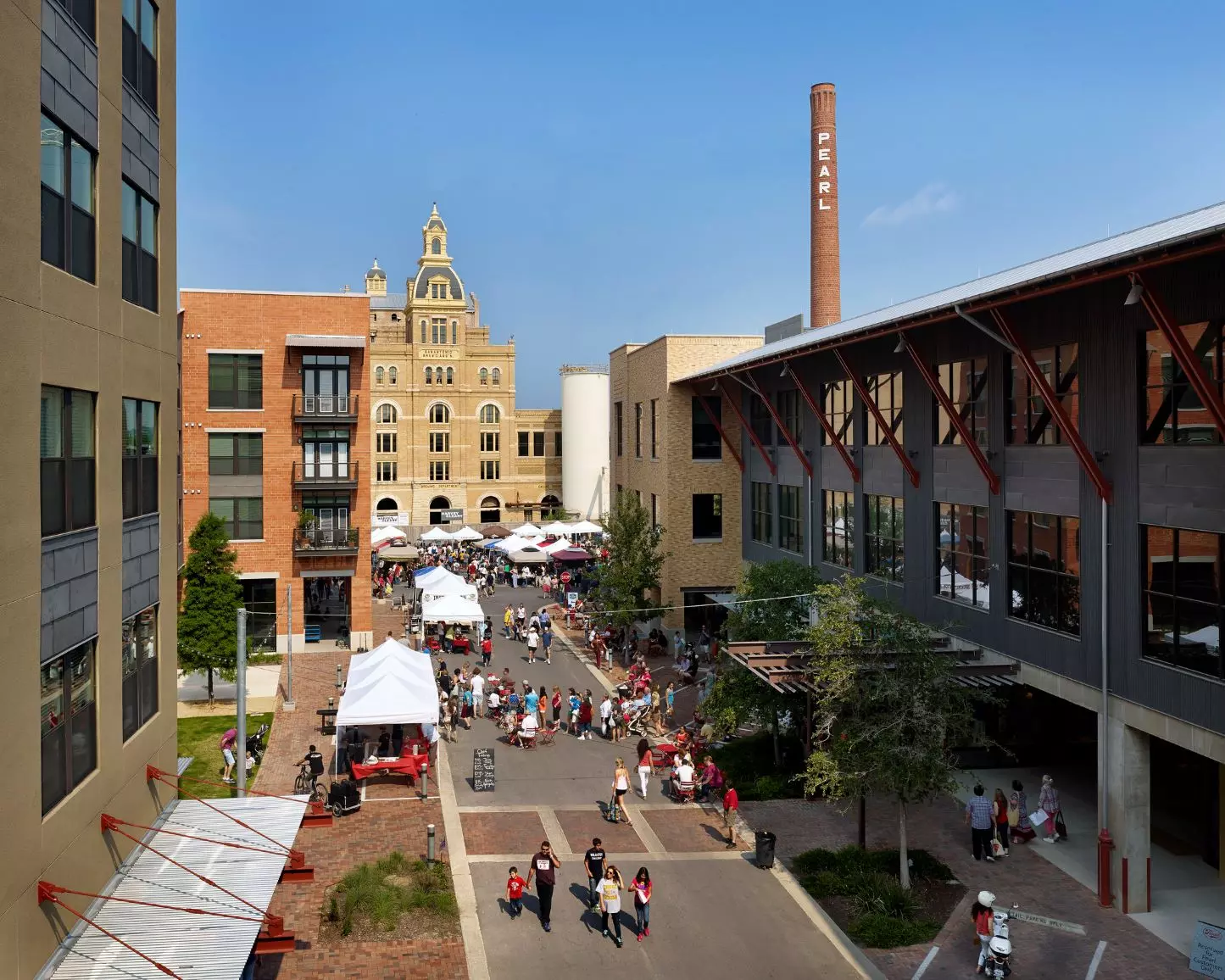In the old American West immortalised by the great cinema, the houses, emporiums, bank and saloon were distributed, compact and accessible, around Main Street, the main arterial road of the village. This urban model, however, became obsolete and residual, in the United States and elsewhere, after World War II. With the advent of the family car, the large suburbia of single-family houses surrounded by greenery became the paradigm.
An ideal of security and well-being, as well as a status symbol, called into question after the ‘Glorious Thirties’ by social and urban planning issues. Over the years, the enormous land consumption due to sparse housing density has come to look more and more like an environmental aberration. Not only that: the atomisation of living is inextricably linked to the fraying of social ties, to a widespread feeling of loneliness, and to a sub-optimal distribution of services, especially with regard to the weaker segments of the population, such as the elderly.
In order to counter the 'sub-urban' narrative, the American New Urbanism movement attempts to assert a vision of city development that makes greater density and the encouragement of pedestrian spaces the parameter for addressing both construction and urban redevelopment. Its foundation is officially traced back to 1993 with the association's first congress. Peter Calthorpe, Andrés Duany, Elizabeth Moule, Elizabeth Plater-Zyberk, Stefanos Polyzoides and Dan Solomon, American architects, urban planners and sociologists, are recognised as the founders, while Peter Katz (author of ‘The New Urbanism: Toward an Architecture of Community’, 1993), will be entrusted with the coordination of the movement. The Congress for New Urbanism is held annually (the 31st CNU was held at the end of May in Charlotte, North Carolina), to debate theses and cases of pedestrianisation, planning and management of public spaces, and strengthening the sense and involvement of the community (referred to as ‘placemaking’), among the association's more than 1,600 members.
The limitation of space for the car and the densification of pedestrian-friendly services represent for New Urbanism the compass by which to measure the development of a district with a heterogeneous and inclusive vocation, which seamlessly organises residential buildings, work and commercial spaces and finds in the old ‘Main Street’ the hinge around which to orient the sociality and identity of the place.
An urban planning vision that sometimes espouses support for the policy of ‘mixed-income housing’, spurring the introduction of rent-controlled residential quotas to foster social diversity, and supporting lobbying initiatives with public decision-makers to promote a more accessible and cohesive city for all. The preservation of the genius loci, motivated by the need to reinforce a sense of belonging as well as to counterbalance the exorbitant appetites of property developers, leans towards the defence of typical ‘small town’ constructions, but is combined with a renewed sustainable awareness that urban space can no longer be regarded as an infinite resource, nor can it be eternally concreted over.
The best-known projects of New Urbanism are to be found in the Southern United States. Seaside, Florida, is considered the first. Designed and built starting in the 1980s on private land following the planning of Andres Duany and Elizabeth Plater-Zyberk, the coastal town covers 32 hectares, estimated to be the optimal area to ensure effective pedestrian mobility, and includes, in addition to residential units, schools, a civic centre, an interfaith chapel as well as cultural and recreational venues.
Kentlands, Maryland, is another exemplary case study. Characterised by a compact urban grid, with dwellings without front lawns, it combines residences of heterogeneous styles (Victorian, Colonial and Neoclassical) and rethinks the layout and access to the garage: no longer a block flanking the building and accessible from the front façade, but an integrated volume accessible from alleys at the rear.
The application of the principles of New Urbanism, however, goes beyond the construction of new neighbourhoods: with sprawl retrofitting projects, entire suburbs in Georgia, California, Maryland, Colorado, Massachusetts, and Arizona have been rethought according to the lens of greater density: recreating small centres and hubs within polycentric areas, increasing the efficiency of public transport, eliminating parking on the street front, planting green spaces, and diversifying building types for the benefit of greater inclusiveness.
Despite its notoriety, and a fascination with the European urban planning model claimed as an explicit case study, New Urbanism will never acquire a position in Europe free of criticism. The first is generally linked to an identification of the models proposed by New Urbanism with the phenomenology of ‘gated communities’, compounds of dwellings that, by virtue of the security perimeters that delimit them, prohibit access and the use of spaces and services to those who, often for reasons of census, live outside this specific community.
Another objection relates to a passatist idea, at least according to detractors, of the architectural languages of reference, which would see traditional American architecture as a model that is still current, to the detriment of a lack of closeness to contemporary demands. Mistrusts that the great distance in mindset between the old and new continents might at least partially explain. Think of the debate on the city of fifteen minutes, much debated in Europe after Covid: a model, mutatis mutandis, that better than any other could build a bridge and open up points of contact and instances of comparison between the two sides of the ocean.
